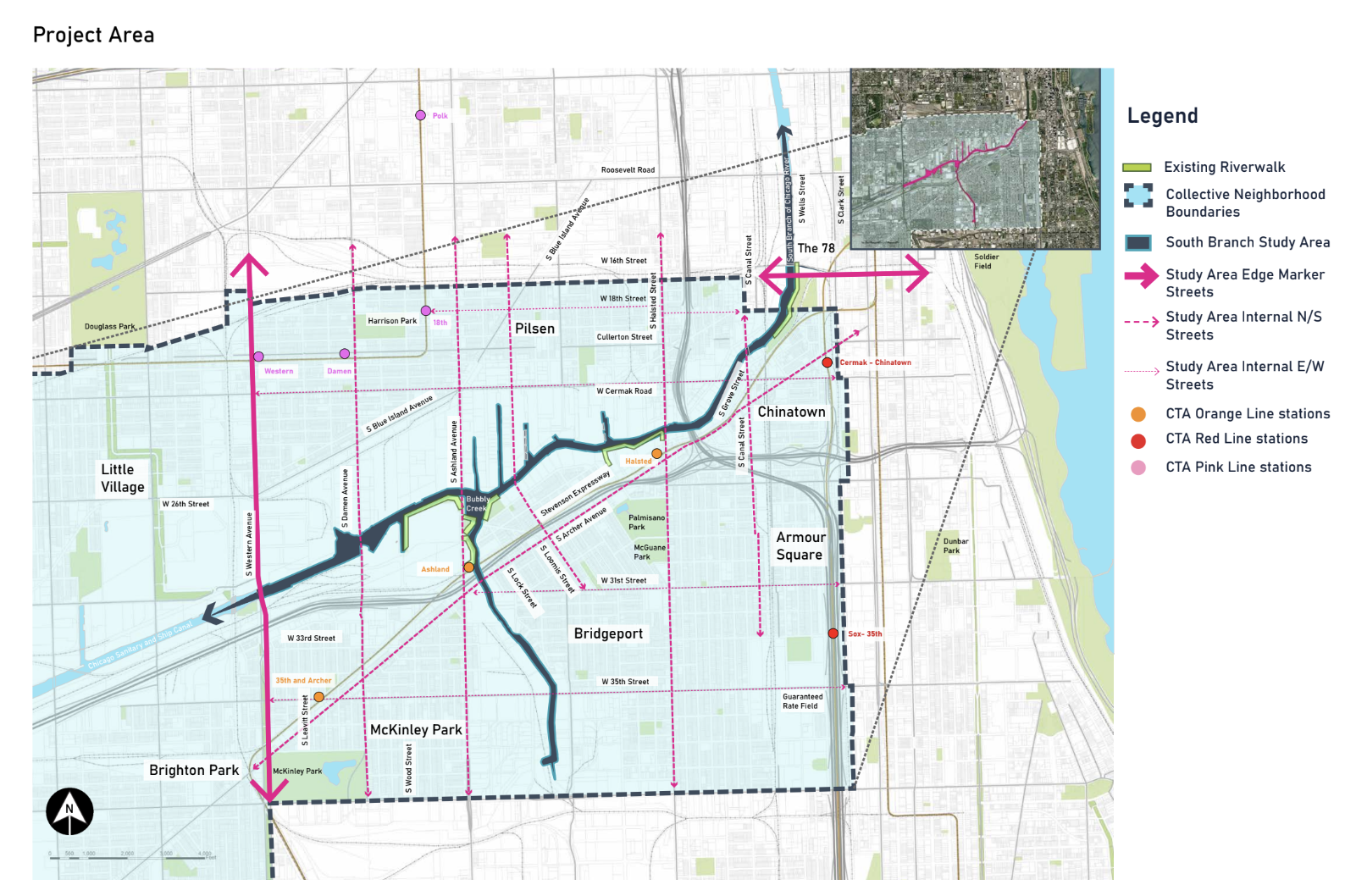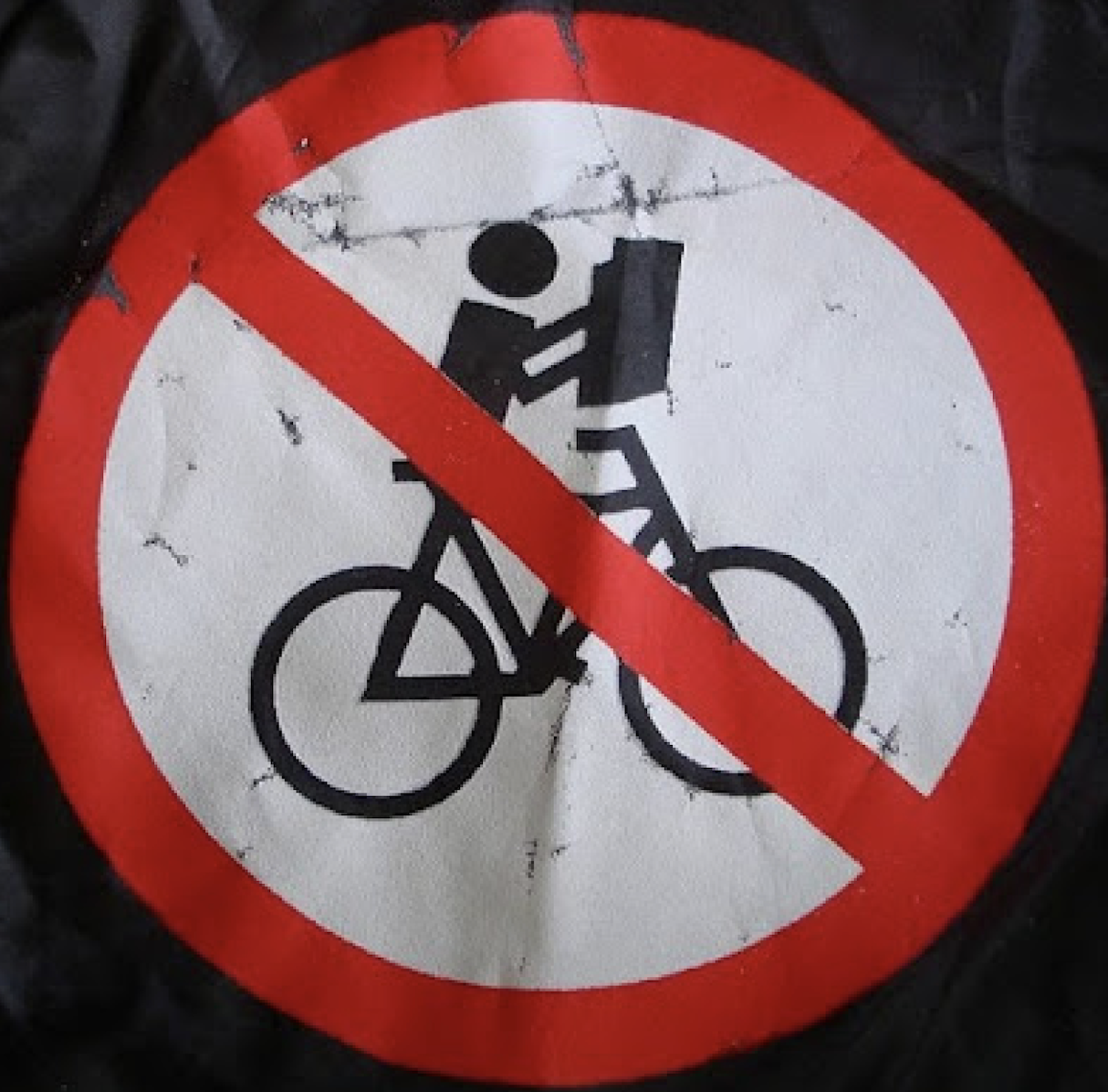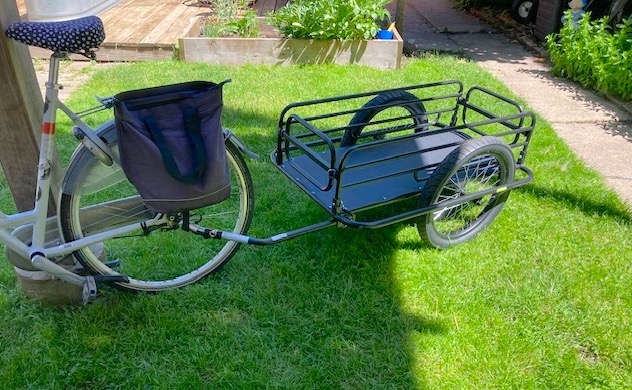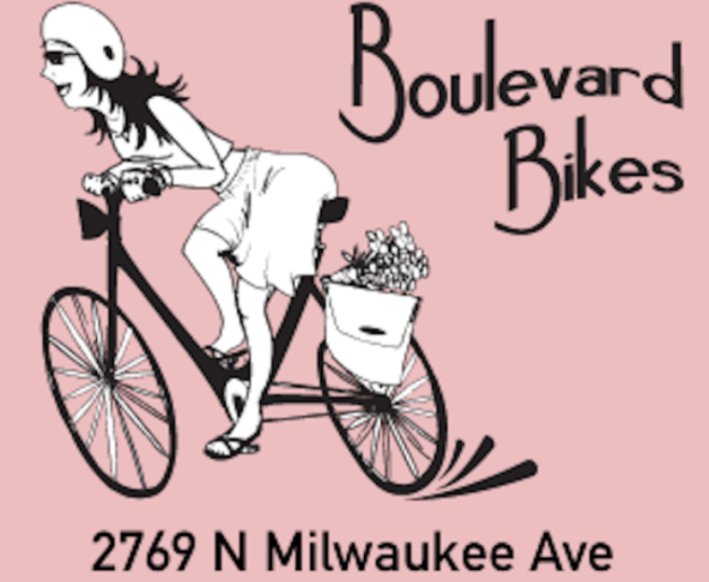
Update Friday 5/24/24 2:45 PM: Morgan Madderom, a member of the grassroots transit advocacy organization Commuters Take Action, provided this statement from the group:
"Commuters Take Actions is thankful for the leadership of Ald. Vasquez and Ald. Martin in calling for Bus Rapid Transit on Western Avenue. The fact 17 of the 18 alders that serve Western Avenue signed on shows support for BRT on Western across the city. BRT has numerous benefits including faster and more reliable service, and works towards goals of mode shift and sustainability. BRT on Western Avenue would particularly be beneficial because it connects numerous communities that do not have direct access to rail, and directly connects riders to five different CTA stations, including orange, pink, blue, and brown line stops, as well as three Metra stations and numerous east/west bus routes. Commuters Take Action is working with other advocates and advocacy groups to build and show support for Western BRT down the corridor. We look forward to a brighter future for transit in Chicago."
Update Friday 5/24/24, noon: Active Transportation Alliance spokesperson Ted Villaire provided this response to the news.
"Bus rapid transit on Western Ave. would improve access to jobs, education, and essential services for the thousands of daily transit riders along this corridor, including low-income populations who rely on public transportation. Western Avenue's strategic importance lies in its connections to numerous 'L' and Metra stations, integrating various transit modes and enhancing overall connectivity. Local transportation agencies have recognized Western's potential for BRT through multiple plans over the past decade. With federal funding supporting BRT projects across the Midwest, the time is ripe for Chicago to seize this opportunity."
Yesterday alderpersons Andre Vasquez (40th) and Matt Martin (47th), two transit-friendly City Council members in adjacent North Side wards, shared some exciting news. They've teamed up with just about every other alder whose district includes Western Avenue, Chicago's longest street, on a letter requesting a study about the feasibility of a bus rapid transit corridor on that key arterial. They sent the document to Mayor Brandon Johnson, CTA President Dorval Carter, and Chicago Department of Transportation Commissioner Tom Carney.
Yesterday, Alders up and down Western Ave sent a letter to Mayor Johnson, the CTA and CDOT urging them to explore building Bus Rapid Transit (BRT) on Western Ave. I am proud to have worked with Alder Vasquez to write this letter & gather support from this wide-ranging coalition. pic.twitter.com/IRKwPMxOHn
— Alderman Matt Martin (@AldMattMartin) May 23, 2024
"Doing so will help improve access to housing, jobs, and education for thousands of Chicagoans and is supported by five recently released studies and recommendations published by Mayor Johnson’s Transition Committee, the CTA, CDOT, the Chicago Metropolitan Agency for Planning, the Regional Transportation Authority, and the Department of Planning and Development," the letter stated. "To that end, we ask that the CTA include Western Avenue among the potential BRT corridors to study through their recent Invest in Cook grant, with the goal of rapidly applying for federal funds to execute on this project."
But as longtime Streetsblog readers know all too well, roughly a decade ago the City of Chicago proposed building a robust BRT corridor (the downtown Loop Link route doesn't count) on Ashland Avenue, a mile east of Western. But the plan was permanently back-burnered in the face of fierce Not In My Back Yard opposition. We caught up with 47th Ward Chief of Staff Josh Mark to ask how, or why, he thinks that problem can be avoided this time around. This post has been edited lightly for clarity and brevity.
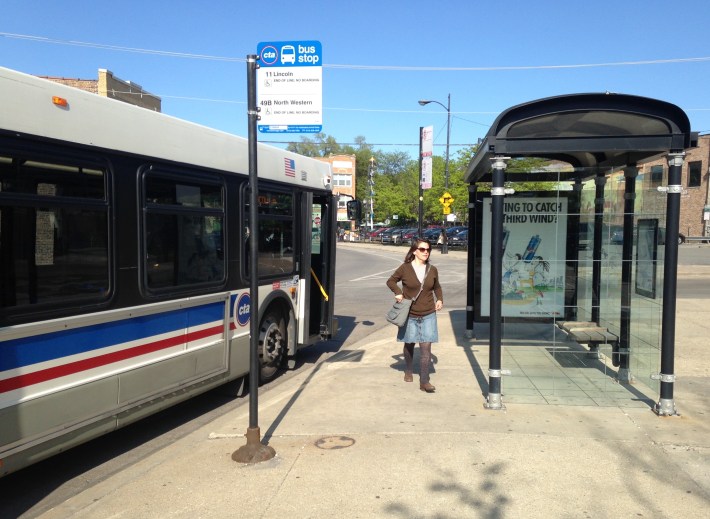
John Greenfield: Ald. Martin and Ald. Vasquez are kind of a dynamic duo nowadays. [Mark laughs.] They cosponsored the resolution for a new CTA chief. They're both involved with the Ravenswood pedestrian and bike safety improvement project. There are a lot of things the two wards are doing together.
Josh Mark: We have a good working relationship. We share a vision on transportation. We cowrote the resolution for a new CTA president, and we cowrote the Western BRT letter.
Ald. Martin's and Ald. Vasquez's teams worked together on the BRT letter, over a period of months, frankly, to research and write this letter. We then worked to gather support from alders along Western Avenue, and we got 17 out of the 18 alders along Western to sign on. The eighteenth one, [Ald. Matt O'Shea (19th)] is not opposed. He didn't sign on for reasons of his own, but he indicated that this is not something that he's aggressively opposed to.
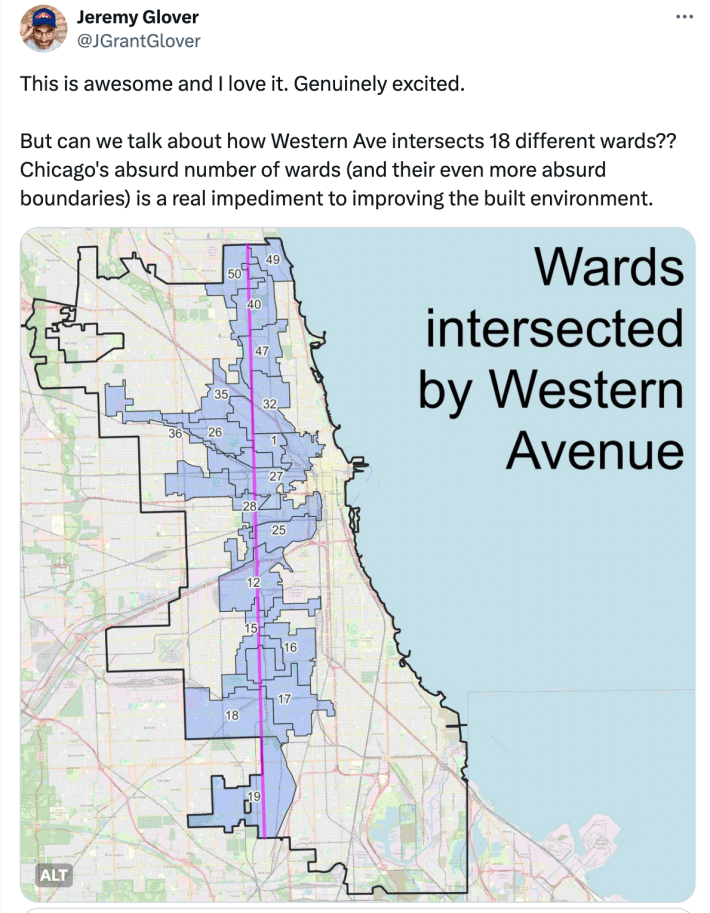
It is an exciting thing. We have hopefully been working to build momentum on Western BRT. We know that there is a lot of grassroots movement in favor of it. Western makes a lot of sense for all the reasons that everyone already knows. [Read the full letter for more background on this.] And BRT is being funded, as we state in the letter, around the country. I saw Miami is building stuff, and Austin is building a BRT line, and Indianapolis is building more, and Madison, Wisconsin, just got one funded.
Chicago is falling behind on a national and regional level. We appear to be losing on transit to cities like Indianapolis and Madison that are doing a really good job on buses.
JG: And obviously peer cities like New York and Los Angeles are leaving Chicago in the dust on BRT and bus-only lanes.

JM: Exactly.
JG: Let me ask the obvious question. When the City of Chicago tried to do BRT on Ashland Avenue, something very similar to what you're proposing – they actually floated the idea of both Ashland and/or Western and then settled on Ashland – they faced a really stiff blowback. The "Not In My Back Yard" types were opposed to having fewer mixed-traffic lanes to make room for center-running bus lanes and stations; banning left turns from Ashland in some locations; and removing a small percentage of car parking spaces.

So how are you going to keep this project from being a non-starter, where the NIMBYs just come out of the woodwork and are successful in convincing the mayor to put this on the back-burner? That's what happened under Rahm Emanuel.
JM: This is only the start of what we can only imagine is a long process. It takes a long time to get federal funding and to build stuff. Our initial goal is to make sure this conversation is happening again, at the government level, that the City is talking about it. Because we can't even talk about how to face opposition until we actually start having the conversations again.
In terms of how we might avoid or go above opposition, I wasn't in government in 2014 when this happened. I think that the world has changed and Chicago has changed. There is an ecosystem of transit advocacy that has popped up, that reflects the way Americans more broadly, and Chicagoans in particular, have come to understand the importance of transit. Things are different, people are different, and understand things differently today than they did ten years ago. So I expect that the public reception will be different.
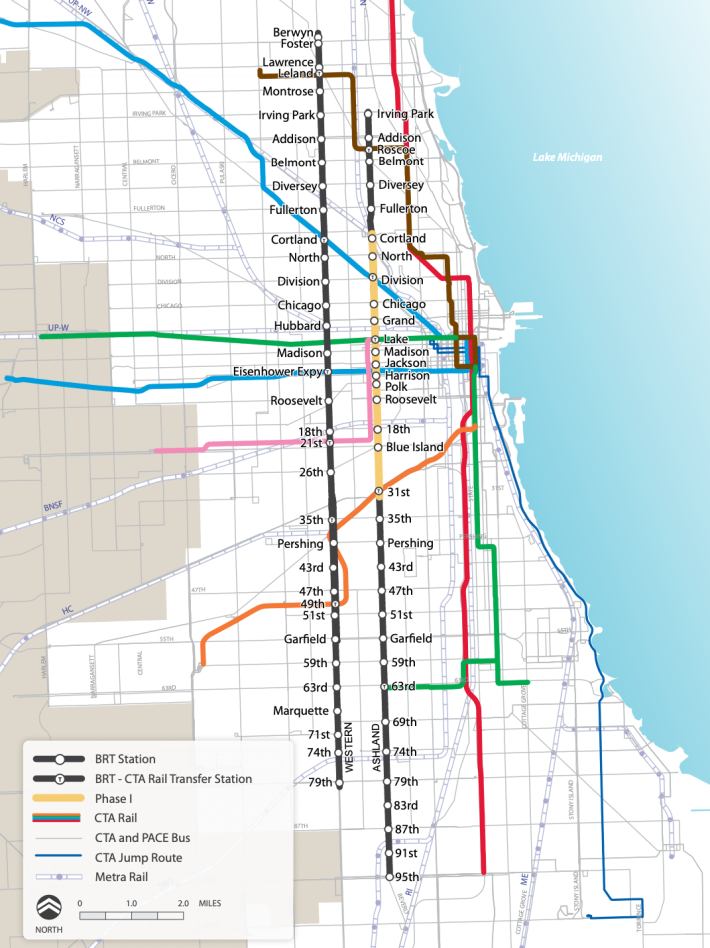
The difference also is for there to be a coordinated leadership in favor of BRT. We wrote to [Chicago Department of Transportation Commissioner] Tom Carney, [CTA President Dorval] Carter, and Mayor Johnson. They have not yet taken a position. But it's important that you have virtually unanimous support among the alders whose wards would be impacted. Now, folks might change their mind if they hear from a lot of angry people. But the fact is, those alders were already willing to put their name out there for the initial conversations and the initial studies.
I won't name names, but it seems as though there are alders on the list who were not in favor of BRT ten years ago, who at least felt comfortable enough to put their name on it this year. So how we overcome the opposition is the same as any other conversation.
There are tradeoffs, and we have to educate the public about the tradeoffs. I'm not sure the education the education happened the way it should of ten years ago. And I don't think that was the fault of the CTA. From what I can tell, they were along in doing this education.
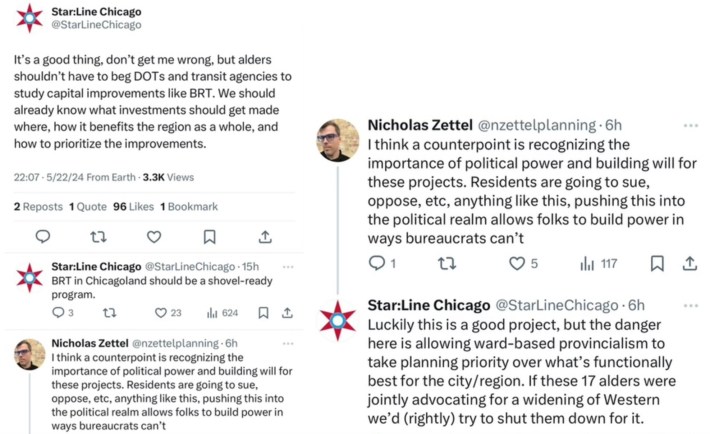
[As someone who reported on the City's Ashland BRT proposal back in the day, my impression was that then-Mayor Rahm Emanuel avoided saying much to endorse the idea.]
What's important now is having a cohesive front involving elected officials – including local alders – the CTA, the [Regional Transportation Authority, which oversees the CTA] probably. And then a whole host of neighborhood and advocacy agencies who can help ensure that folks come out to the community meetings and know the reality of what is being proposed, and understand the reality of the tradeoffs.
And also we're ten years later. That's ten years of cities that have built BRT that we can now point to. And we have bus-only lanes in the global cities that we want to compare ourselves with, like London and Paris, our peer cities on a national level, and the regional cities that are right next door. I think that changes the conversation, but we'll see what happens when it happens.
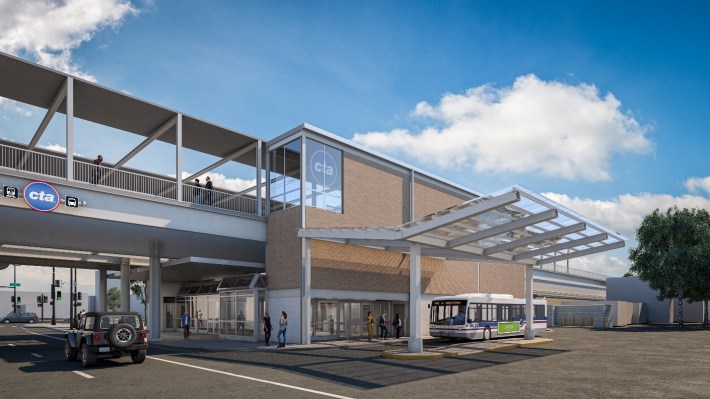
JG: All right. On a related note, today the CTA released a rendering of the rehabbed Western Brown Line station in the 47th Ward, and announced an online community meeting about the project. [The session is next Wednesday, May 29, at 6 p.m. – register here.] Any thoughts on that?
JM: This is actually the second public meeting out of three. To its credit, the CTA wanted three for thorough community engagement. We had a first meeting last fall that quite a few people attended, to help inform the direction that the CTA was going to go in terms of their initial design. This is $19 million that we helped the CTA get, between [Tax Increment Financing] funds and federal infrastructure dollars.
Almost any time we post about anything, people will comment, "Why are you doing [some other thing]? Why don't you fix the Western Brown Line station?" We want people to know that it's literally in the process of happening.

Did you appreciate this post? Please consider making a tax-deductible donation to support Streetsblog Chicago's paywall-free sustainable transportation reporting and advocacy.

